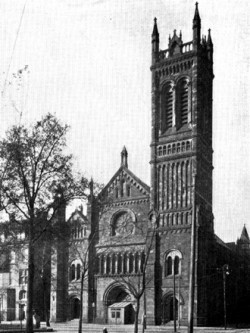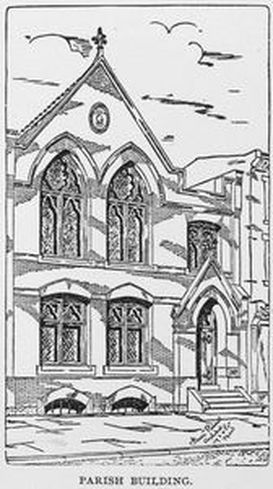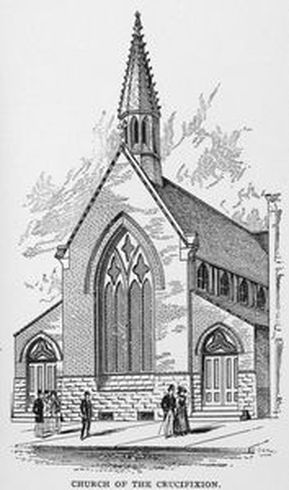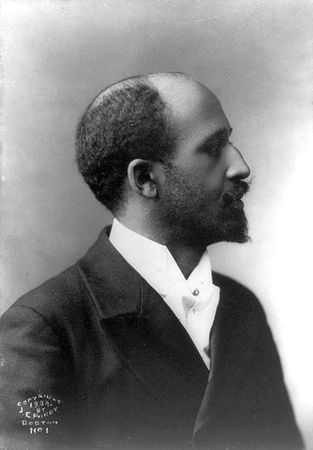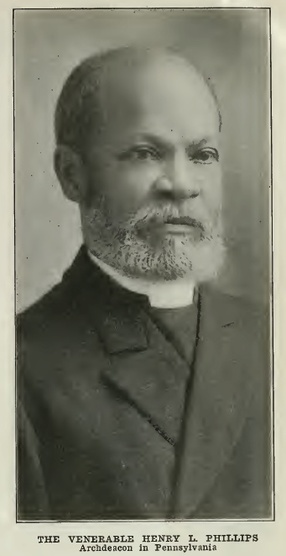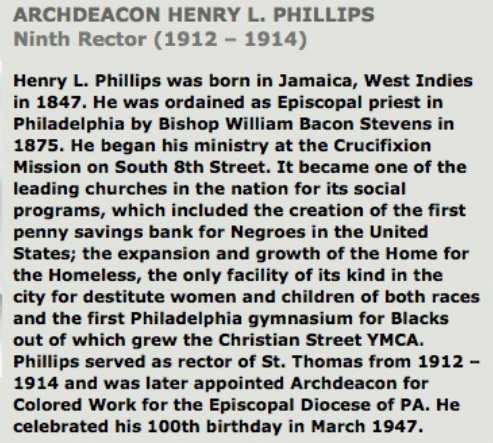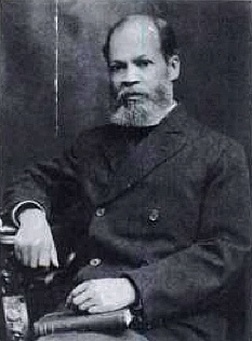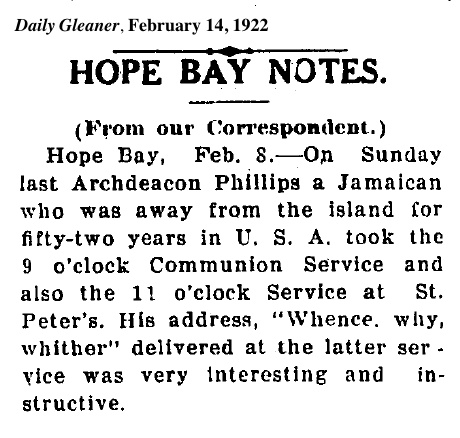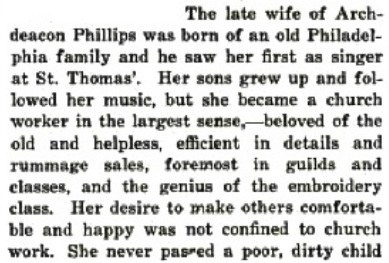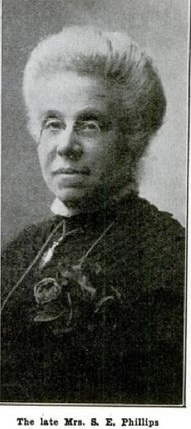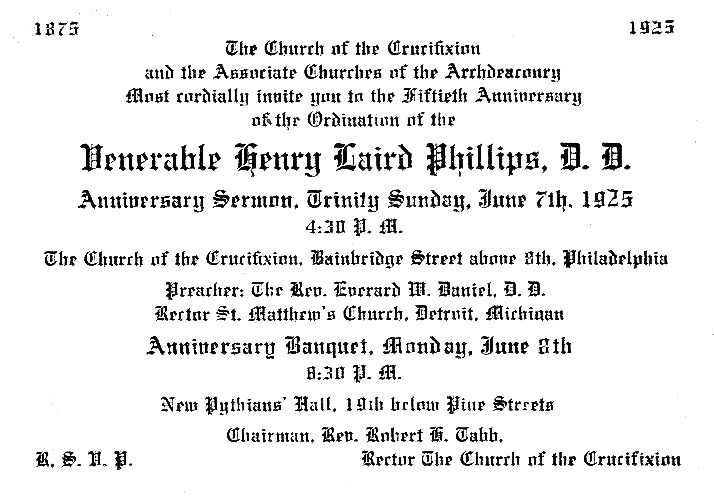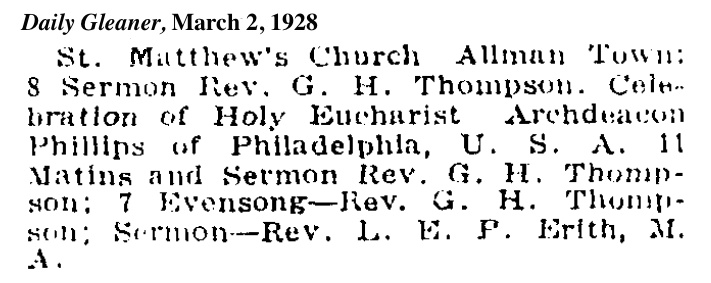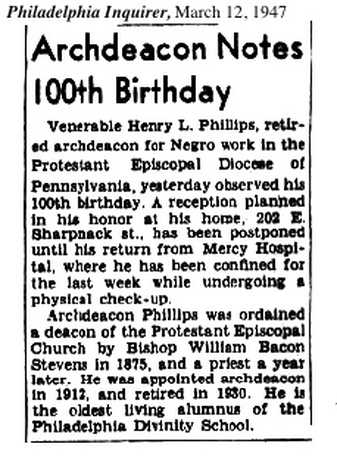in the United States
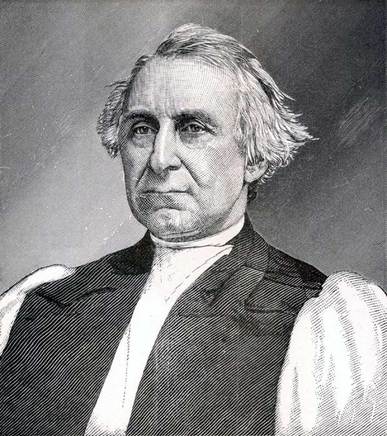 Bishop Stevens
Bishop Stevens
Phillips spent two years at the Moravian Mission House, studying Hebrew and working at a mission in North Philadelphia. He also experienced frost and snow for the first time. In 1872 he enrolled at the Philadelphia Divinity School, then located in a modestly-sized private house. This was an Episcopalian theological college, and there is no explanation given of his reasons for becoming an Episcopalian. He remembered especially the differing but equally effective teaching styles of two professors - Daniel Raynes Goodwin, who encouraged wide-ranging discussion, and George Emlen Hare, who discouraged all questions during class time. He finished his training in the summer of 1875 and was ordained deacon by Bishop Stevens, shortly afterwards. In December 1875 he married Sarah Elizabeth Cole, whose sister, Rebecca J Cole was the second African American woman to qualify as a medical doctor. Dr Cole received her education at the Institute for Colored Youth in Philadelphia, and the Woman's Medical College of Pennsylvania.
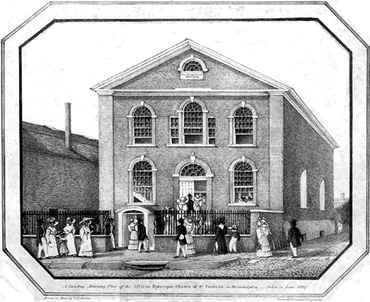 Church of St Thomas, 1829
Church of St Thomas, 1829
After his ordination Henry Phillips served for a little over a year at the Church of St Thomas, near 5th and Walnut Streets. He describes it as an 'aristocratic' church, and DuBois said it represented 'the most cultured and wealthiest of the Negro population and the Philadelphia born residents'. He began his first service at the Church promptly at 10.30 am, only to be told by the organist afterwards that he should have waited until she played a voluntary when there were enough people in the congregation for the service to start. Phillips said that his Fairfield training could not accept that, and the congregation happily accepted services that started on time thereafter. He only stayed at St Thomas for about 17 months, and was married in the Church in December 1875.
He had hoped to be able to go as a missionary to Liberia, or Haiti, but neither proved possible. He received offers of cures in the South, one in New Orleans, but he was not prepared to accept them. For a time he ran a school, which did well, but soon the opportunity turned up which decided his future. It was suggested to him that he should inquire about the possibility of becoming rector of the Church of the Crucifixion, the other 'Colored' Episcopal church in Philadelphia at the time. He was well-known to the 12 White members of the church vestry, as he had been a Sunday school teacher and lay-reader there while he was an ordinand. So he met with the rector's warden, who explained that the church owed money to the previous rector, and that there was no money to pay him; he immediately accepted the job, and remained at the Church of the Crucifixion as rector for 25 years.
In The Philadelphia Negro W. E. B. DuBois wrote in 1899 of the Church of the Crucifixion and its rector:
'The oldest of the churches is St. Thomas. Next comes the Church of the Crucifixion, over fifty years old and perhaps the most effective church organization in the city for benevolent and rescue work. It has been built up virtually by one Negro, a man of sincerity and culture, and of peculiar energy. This church carries on regular church work at Bainbridge and Eighth and at two branch missions; it helps in the Fresh Air Fund, has an ice mission, a vacation school of thirty-five children, and a parish visitor. It makes an especial feature of good music with its vested choir. One or two courses of University Extension lectures are held here each year, and there is a large beneficial and insurance society in active operation, and a Home for the Homeless on Lombard street. This church especially reaches after a class of neglected poor whom the other colored churches shun or forget and for whom there is little fellowship in white churches.' |
The Church of the Crucifixion
A building near Eighth and Bainbridge Streets. It was built as things were done in those days - built in a very poor and unsatisfactory way. There was no cellar. Sills were placed on the ground. A small place dug out in front for the heater or apology for one. No windows in the sides. Six little ones in the roof. The place could never be well heated. I have often had to put my surplice over my overcoat. In summer it could be properly ventilated. I have often wondered why any one would come to such an uncomfortable place. Poverty was concentrated in the neighborhood as is not to be seen in any part of Philadelphia today. There were many open cesspools and often there was but one hydrant in a little space for three families. Where was water to come from when a hydrant froze? Many of the houses, originally built for a small family, had four families living in one house - a family in one room. The inside of such a house was always very dark. I often had to light my way by means of a match in climbing stairways to make visits. If I hadn’t a match I had to feel my way up stairways that apparently had never been cleaned. Henry Laird Phillips.
A building near Eighth and Bainbridge Streets. It was built as things were done in those days - built in a very poor and unsatisfactory way. There was no cellar. Sills were placed on the ground. A small place dug out in front for the heater or apology for one. No windows in the sides. Six little ones in the roof. The place could never be well heated. I have often had to put my surplice over my overcoat. In summer it could be properly ventilated. I have often wondered why any one would come to such an uncomfortable place. Poverty was concentrated in the neighborhood as is not to be seen in any part of Philadelphia today. There were many open cesspools and often there was but one hydrant in a little space for three families. Where was water to come from when a hydrant froze? Many of the houses, originally built for a small family, had four families living in one house - a family in one room. The inside of such a house was always very dark. I often had to light my way by means of a match in climbing stairways to make visits. If I hadn’t a match I had to feel my way up stairways that apparently had never been cleaned. Henry Laird Phillips.
|
1894-8 George Alexander McGuire, later Chaplain General of the UNIA, worked with Phillips in Philadelphia
1897 Church of the Crucfixion, semi-centennial 1902 Appointed Archdeacon for Colored Work, Diocese of Pennsylvania Visit to West Indies 1905 Philadelphia Association for the Protection of Colored Women. Founder/President 1911 Visit to Jamaica 1912-4 Rector, Church of St Thomas, Philadelphia 1914 Gave funeral oration for William Carl Bolivar, Black Philadelphia journalist and bibliophile 1922 Visit to Jamaica 1938 91st birthday celebration 1947 Death (I have yet to find an obituary, or other details.) [I have not had a great deal of success in finding material on Archdeacon Phillips after 1902, but as I find more information I will expand this page. I am very grateful to the archivists of the Episcopal Church in the USA, and of the Diocese of Pennsylvania, for the assistance they gave me which enabled me to get even this far! JL.]
|
from W. E. B. DuBois' publication, Crisis, August 1918
1925 saw the celebration of the 50th anniversary of Archdeacon Phillips ordination:
Apparently the Archdeacon visited Jamaica again in 1928, but traces of the visit are minimal -
The Ellis Island record confirms the 81-year-old returning to the U.S.A. in mid-March, 1928:
I have still had no success in identifying any account of the death and funeral of Henry Laird Phillips, and an article in Forth: the Spirit of Missions , in June 1947, which appears to be an account of his life, is, so far, unfortunately inaccessible.
The Living Church - Volume 115 - 1947
'Henry Laird Phillips, Priest.
The Rev. Henry Laird Phillips, 100, a retired priest of the diocese of Pennsylvania and rector emeritus of the Church of the Crucifixion, Philadelphia, died on May 27th at his home in Germantown, Philadelphia, Pa.'
'. . . the Negro priest of longest service in the Episcopal Church
is one of the most valuable social reformers of the day,
the Rev. H. L. Phillips of Philadelphia.'
THE NEGRO CHURCH: Report of a Social Study made under
the direction of Atlanta University; together with the Proceedings of the
Eighth Conference for the Study of the Negro Problems,
held at Atlanta University, May 26th, 1903,
EDITED BY W. E. BURGHARDT DUBOIS, CORRESPONDING SECRETARY OF THE CONFERENCE, The Atlanta University Press, Atlanta, Ga.1903
is one of the most valuable social reformers of the day,
the Rev. H. L. Phillips of Philadelphia.'
THE NEGRO CHURCH: Report of a Social Study made under
the direction of Atlanta University; together with the Proceedings of the
Eighth Conference for the Study of the Negro Problems,
held at Atlanta University, May 26th, 1903,
EDITED BY W. E. BURGHARDT DUBOIS, CORRESPONDING SECRETARY OF THE CONFERENCE, The Atlanta University Press, Atlanta, Ga.1903
